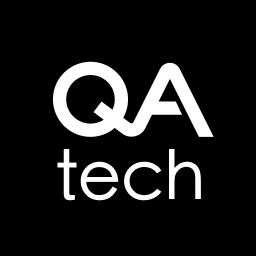Artificial Intelligence (AI) has been making waves in the business world and continuously disrupting many industries. This has resulted in many organizations from the IT sector adopting AI and incorporating it into how their business operates.
One of the most notable transformations to highlight in the technology space, particularly in software engineering, is how AI-driven test automation tools became the norm which drastically improved software testing and made it seamless. As a result, enterprise-level organizations that practice the “Agile” culture embraced this change.
According to Gartner, Inc., this trend is expected to continue and by 2028, 75% of enterprise software engineers will use AI code assistants. It is up from less than 10% in early 2023 and 63% of organizations are currently piloting, deploying, or have already deployed AI code assistants. This statistic is according to a Gartner survey of 598 global respondents in the third quarter of 2023.
What Is Scaled Agile Framework (SAFe)?
Large organizations on an enterprise level have their in-house software engineering department practice Scaled Agile Framework (SAFe). SAFe is a comprehensive and scalable framework designed to help large organizations implement Agile practices across their entire enterprise. It is intended to address the challenges of coordinating multiple teams, integrating their work, and ensuring alignment with broader business goals. SAFe provides structured guidance on roles, responsibilities, and processes to support Agile development at scale.
How do Enterprises Integrate AI Software Testing in SAFe?
In the Scaled Agile Framework (SAFe), software testing is an integral part of the development process and fits into multiple layers and stages of the framework. Here’s an overview of where and how software testing fits into SAFe:
Related Post: AI in Software Testing: How Product Teams Can Use AI to Accelerate Quality Software Launch
Key Testing Practices within SAFe
- Continuous Integration and Continuous Testing: In SAFe, for instance, continuous integration and continuous testing are fundamental practices that ensure quality is built into the product from the beginning. This involves automated testing at various stages of the development pipeline to provide quick feedback on code quality.
- Team Level: At the team level, Agile teams often referred to as Agile Release Train (ART) teams in SAFe, incorporate testing into their development process. This includes:
- Unit Testing: Developers write unit tests to verify individual components.
- Test-Driven Development (TDD): Tests are written before the code to ensure that code meets its requirements.
- Pair Testing: Collaboration between developers and testers to ensure functionality.
- Acceptance Testing: Ensuring the user stories meet the acceptance criteria defined by the Product Owner.
- Iteration and Program Increment (PI):
- Iteration Testing: Each iteration (sprint) includes various forms of testing (functional, regression, and exploratory testing) to validate the new features and ensure no existing functionalities are broken.
- System Demo: At the end of each iteration, teams demonstrate the working increment to stakeholders, including integrated testing results.
- Release Management and DevOps:
- Continuous Delivery Pipeline: Testing is a key component of the Continuous Delivery Pipeline in SAFe, which includes continuous exploration, continuous integration, continuous deployment, and release on demand. Automated testing ensures that code can be deployed at any time.
- DevOps Practices: DevOps practices in SAFe emphasize the importance of continuous testing and monitoring as part of the deployment pipeline to maintain high quality and reliability of the system.
- Built-In Quality: Built-in quality is one of SAFe’s core principles, ensuring that every element of the solution meets the necessary standards. This includes:
- Code Quality: Ensured through peer reviews, static code analysis, and code coverage metrics.
- Automated Testing: Extensive use of automated tests (unit, integration, system, and acceptance tests) to detect defects early.
- Manual Testing: Exploratory and user acceptance testing to catch issues that automated tests might miss.
- Roles and Responsibilities:
- Agile Teams: Responsible for executing tests, fixing bugs, and ensuring their code meets quality standards.
- System Team: Supports the ART by integrating work from different teams and performing end-to-end testing.
- Release Train Engineer (RTE): Ensures that testing practices are consistent across teams and helps resolve issues that might impede testing.
- Quality Management:
- Inspect and Adapt (I&A): Regular I&A workshops at the end of each Program Increment (PI) involve reviewing test results and quality metrics to identify areas for improvement.
- Metrics and Feedback: Continuous collection and analysis of quality metrics to inform decision-making and drive improvements in the development process.
Ultimately, in SAFe, testing is not a separate phase. Rather, it’s an ongoing activity that is integrated throughout the development lifecycle. This ensures that quality is continuously assessed and improved, and defects are identified and addressed as early as possible. By embedding testing into every level of the framework, SAFe aims to deliver high-quality, reliable, and valuable software solutions.
How Does AI Software Testing Add Value in SAFe?
Artificial Intelligence opens limitless possibilities. From extending existing solutions and making products and services more valuable and scalable. This has been proven when AI-driven software testing platforms came into the spotlight.
On top of that, incorporating AI software testing within the Scaled Agile Framework (SAFe) can significantly enhance testing efficiency, accuracy, and coverage. Here’s how AI-driven testing can be integrated effectively in SAFe:
- Automated Test Case Generation: AI can be used to generate test cases based on user stories, requirements, and historical data. This helps in:
- Reducing the time spent on manual test case creation.
- Ensuring comprehensive test coverage by identifying edge cases that might be missed by human testers.
- Intelligent Test Execution: AI can optimize test execution by:
- Prioritizing test cases based on risk and impact analysis.
- Dynamically selecting and running the most relevant tests based on code changes, thereby reducing test cycle times.
- Test Maintenance: AI-driven tools can automatically maintain and update test scripts in response to changes in the application. This reduces the burden on testers to manually update tests and helps in:
- Keeping the test suite up to date.
- Reducing flaky tests and false positives.
- Defect Prediction and Prevention: AI can analyze historical data and code metrics to predict potential defect areas, enabling teams to:
- Focus testing efforts on high-risk areas.
- Take preventive measures during development to reduce the introduction of defects.
- Continuous Testing and Feedback: AI enhances continuous testing practices by:
- Providing real-time feedback and analytics on test results.
- Automatically analyzing test failures and suggesting potential root causes, speeding up the debugging process.
- Visual and Usability Testing: AI-driven tools can perform visual regression testing and usability assessments to:
- Ensure the application’s UI remains consistent and visually correct across different versions.
- Detect UI anomalies and usability issues that might not be caught by traditional automated tests.
- Integration with DevOps and CI/CD Pipelines: Integrate AI-driven testing tools with CI/CD pipelines to:
- Ensure tests are run automatically with each code commit.
- Use AI to analyze and optimize the deployment process, identifying the best times and environments for testing.
- Monitoring and Self-Healing Systems: AI can be used to monitor the application in production and trigger automated tests based on detected anomalies. This helps in:
- Early detection of issues in live environments.
- Automatically triggering rollback or other corrective actions if tests fail.
AI Integration Across SAFe Levels
Integration with SAFe levels on a team-level perspective, AI tools assist Agile teams by automating repetitive testing tasks, allowing teams to focus on more strategic and creative aspects of development and testing. It also impacts the team’s daily workflows: AI integrates with daily workflows, providing insights and recommendations to improve code quality and test coverage.
At a program level, Agile Release Train (ART) uses AI to coordinate testing activities across multiple agile teams within an ART, ensuring consistent quality and alignment with program goals. In Program Increment (PI) planning, AI-driven insights inform PI planning, helping to allocate testing resources effectively and prioritize high-risk areas.
Now looking at a large solution level, for instance during a solution integration, AI is used to facilitate the testing of large, integrated solutions by automating complex integration tests and providing visibility into system-wide quality. AI helps manage and integrate testing efforts with external suppliers, ensuring that all components of a solution are thoroughly tested.
Conclusion
One of the core values of SAFe is ‘Built-In Quality’. This is the main reason why enterprises are increasingly adopting AI software testing platforms due to the significant advantages they offer over traditional testing methods.
In summary, AI-driven software testing at the enterprise level, especially within the context of SAFe, offers numerous benefits. These benefits include increased efficiency, speeding up feedback cycles, improved test coverage, faster defect resolution, and ensuring that their software products meet the highest standards of quality and reliability.
Leveraging AI software testing tools enables organizations to address many of the most complicated scenarios and turn them into viable business opportunities. It also allows them to use their resources more effectively and scale their agile practices successfully.
Is your organization planning to revolutionize your testing processes? Introducing QA.tech’s AI-powered solution for autonomous software QA testing! An ultimate solution designed to streamline your testing processes and elevate your software to new heights of excellence.
In the fast-paced world of software development, QA.tech promises you ensure the utmost quality and reliability of your applications more critical than ever.



